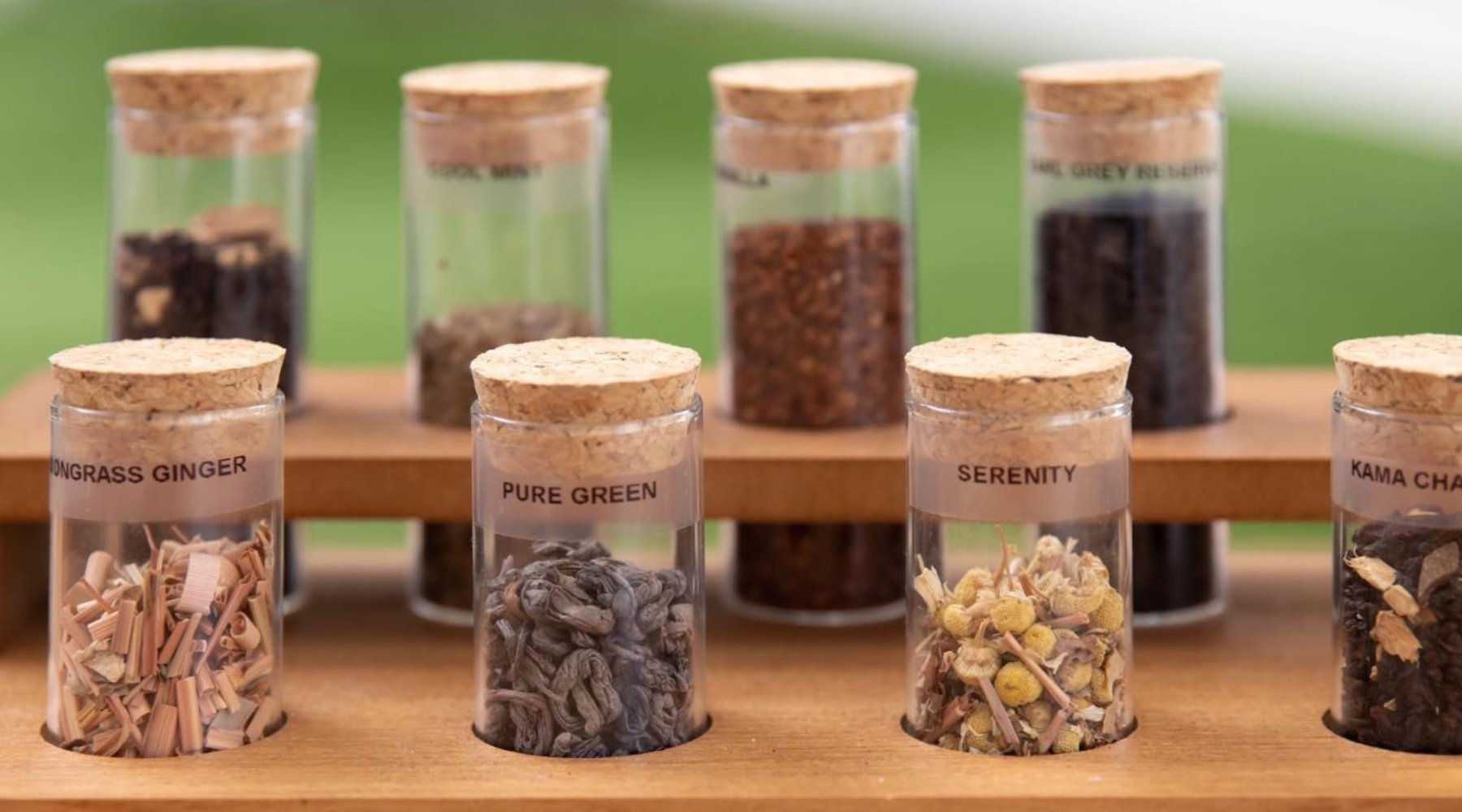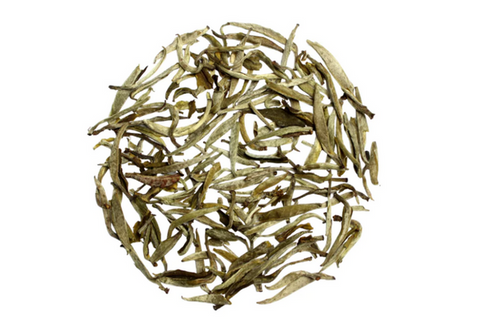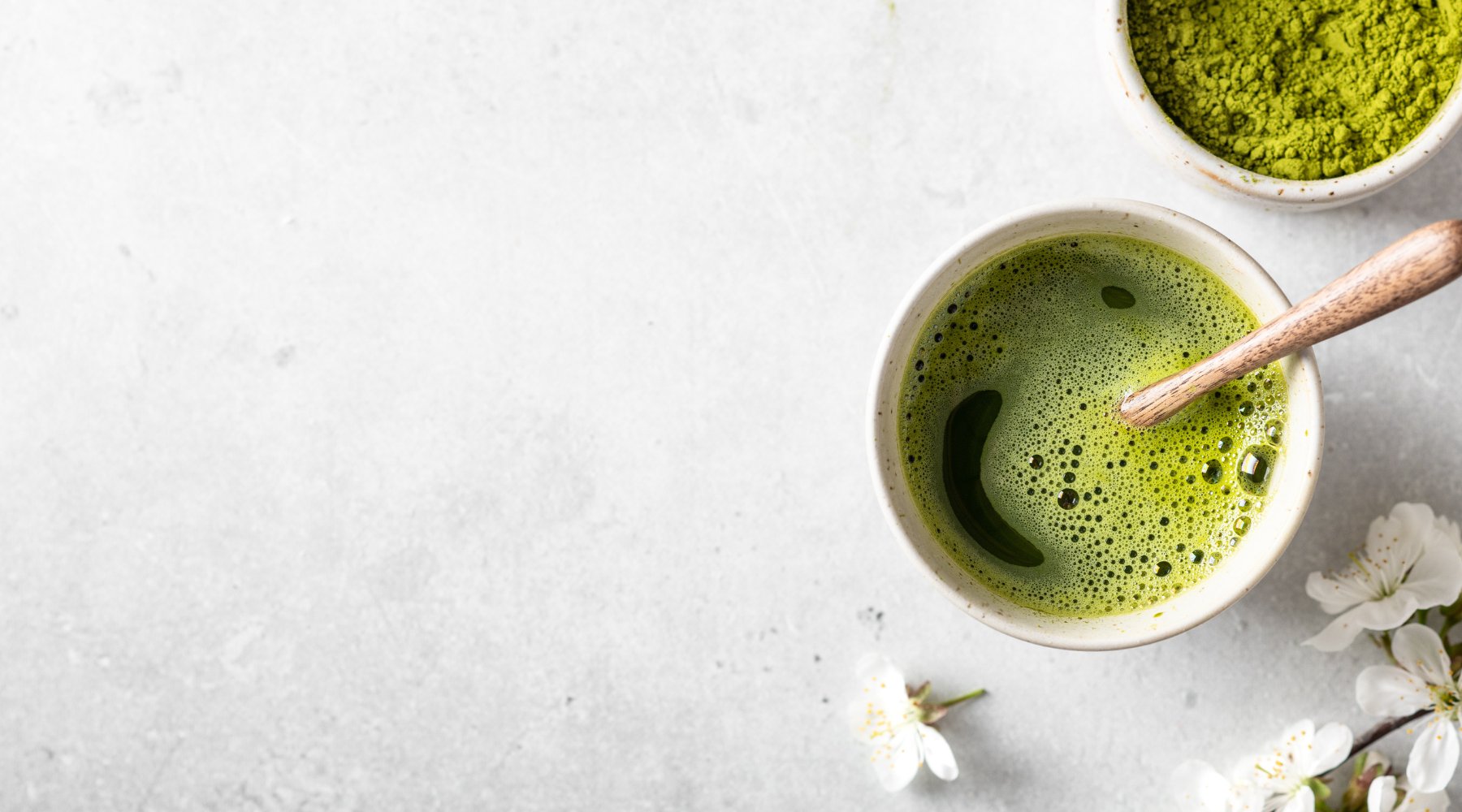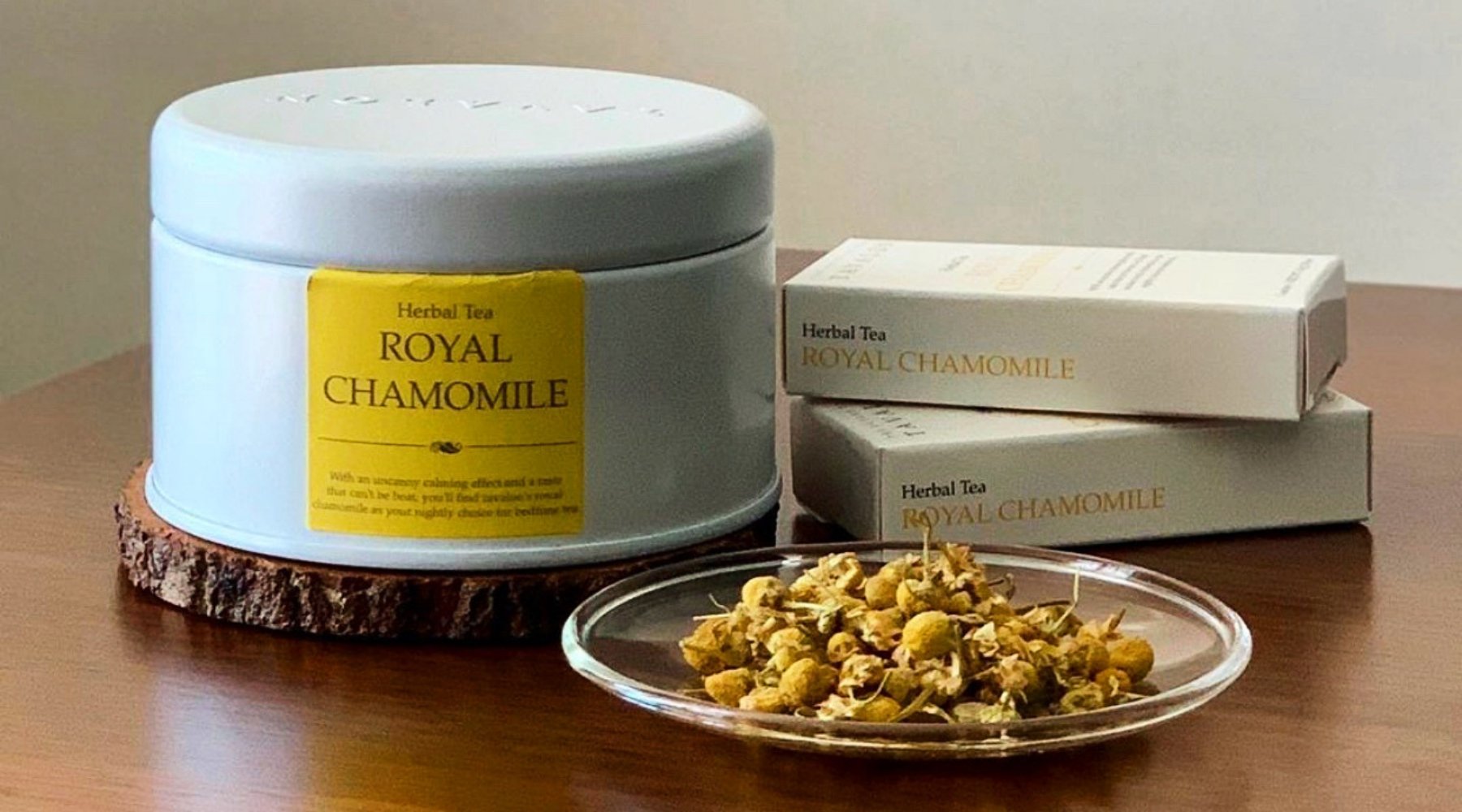
Lesson #1: Different Types of Tea
Welcome to the tea course of the Tavalon tea bar. In this initial lesson, we'll examine the nuts and bolts of tea to help differentiate the main tea types.
To start with, how about we first cover the fundamental question of this course: "What is tea?"
WHAT IS TEA?
Tea is the most consumed beverage on the planet, outperformed just by water when it comes to the most consumed liquid on Earth. A frequently amazing fact to tea beginners is that all teas come from the same plant. The scientific name of this versatile plant is Camellia Sinensis. The diverse assortments of Camellia leaves (black, white, green and oolong) come from how they are made.
Overshadowed by the strong coffee bean empire for too long, especially in Australia, tea is rapidly gaining its lost ground and becoming a new healthy routine. And unlike coffee, tea drinking boasts a very rich art and tradition, making it more than a simple beverage to consume but a unique experience and ritual to cherish.
WHAT IS TAVALONG DOING ABOUT TEA IN AUSTRALIA?
As one of the best tea brands in Australia and New Zealand, Tavalon seeks to offer the most premium tea blends the world has ever known and deliver a luxurious tea drinking experience to suit the Australian palate. At the same time, we aim to educate Australians about the many health benefits of tea and bring the tea tradition back into the spotlight.
TOP TEA CULTIVATING COUNTRIES IN THE WORLD AND THE MAIN TEA TYPES THEY PRODUCE
A good majority of tea comes from China, Japan, India, and Sri Lanka. Recently, there are other countries that grow tea, like Bangladesh, Thailand, Vietnam, and Kenya. The origin of the tea leaves impact the flavour (hence, not all teas are created the same), and other factors that can influence the quality of the tea include soil type, altitude, plant type and age of the tea plant.
Each country can produce all the types of tea, however, some countries are more popularly known for a certain type of tea. For example, Japan is known for green tea and matcha tea, China for white tea and pu-erh, and Sri Lanka for black tea.
- China: Green Tea, Oolong Tea, Pu-erh Tea, Yellow and Jasmine Teas
- India: Spicy Chai Blends, Assam, Darjeeling
- Kenya: Black Tea, Artisan Teas
- Sri Lanka: Ceylon Black, Ceylon Green, Ceylon White Tea
- Turkey: Turkish (Black) Tea, Rize Tea
- Indonesia: Black Tea
- Vietnam: Black Tea, Green Tea, Shan Tuyet Tea
- Japan: Green Tea – Bancha, Sencha, Genmaicha, Hojicha
- Iran: Black Tea
- Argentina: Black Tea, Yerba Mate
WHAT DETERMINES TYPES OF TEA
How the leaves are prepared will determine their final classification as black, white, green, yellow, oolong or other types of tea. The main difference between the many tea varieties is how much oxygen the leaves are permitted to retain during processing and drying. More oxygen produces dark-coloured black teas, for example. Less oxygen results in green tea. Unprocessed leaves are classified as white teas.
7 MAIN TYPES OF TEA
Tea is a beverage that has been consumed for thousands of years; it’s still one of the most popular beverages in the world. With so many different types of tea available, it can be overwhelming to tell the difference and pick the right one to try. Keep reading as we explore some of the most popular types of tea and their unique characteristics.
BLACK TEA

Black tea, currently the most mainstream tea in the US and the UK, was originally produced out of necessity rather than taste (On a side note, black tea is gaining more popularity in Australia).
When European traders first started exporting tea from China, many found that the green tea leaves (green leaves were all that existed at the time), due to the long, exhausting trip back from Asia, would lose freshness.
Merchants would “ferment” the leaves to prolong preservation, thus creating a new variety with a darker and bolder flavour that is more intense than other varieties. Since this was the only way that they could enjoy tea for quite a long time, black tea remains the most loved for most Westerners.
In simple terms, black tea is made from fully oxidised tea leaves, which brings about a dark colour and robust taste. Black tea is typically consumed with milk and sugar, but it can also be enjoyed plain or with a slice of lemon. Some popular varieties of black tea include Aussie Breakfast, NYC Breakfast and Earl Grey Reserve.
GREEN TEA

Green tea is simply an unfermented tea. This tea has recently enjoyed an increase in popularity in Australia, thanks to recent scientific findings touting its health benefits. However, this tea has been around for thousands of years, making it in the history books as the first type of tea to be discovered.
An ancient Chinese legend tells that Shen Nung, a skilled ruler and innovative scientist, was the first to discover and enjoy the delicious taste of tea leaves and hot water.
While visiting a distant region one summer day, he stopped his journey to take a rest. As per his ruling that all drinking water be boiled (as a hygienic measure), the servants began to boil water for him and his advisors to drink.
Dried leaves from the nearby bush fell into the boiling water, transforming the water from clear to a pale green. As a scientist, the Emperor got interested in the new liquid, drank some and found it very refreshing.
Green tea is made from unoxidised tea leaves and is known for its light, refreshing flavour. It is rich in antioxidants and has been shown to have numerous health benefits, including improved brain function and a reduced risk of heart disease. Plus, the Japanese varieties of green tea, such as Matcha – which is a powdered green tea – is an integral part of the Japanese Tea Ceremony, which boasts a rich legacy and involves an unparalleled form of art and ritual.
Some popular varieties of green tea include Matcha, Sencha, Genmaicha, and Pure Green.
OOLONG TEA

Oolong tea is a "semi-fermented" – partially oxidised – tea that is primarily manufactured in China and Taiwan. It is often called Formosa in the tea world, the old Dutch name for Taiwan).
Oolong tea falls somewhere between Green and Black teas, and can resemble either (depending upon the way that it is processed). It is often described as having a floral or fruity taste and is prized for its complexity and uniqueness, as well as its numerous health benefits.
Some popular varieties of oolong tea are Peachy Oolong, Oriental Beauty, and Rose Oolong.
WHITE TEA

White tea is created, on a restricted scale, in China, India and some other smaller tea-producing countries. It is the least processed of its many varieties, created with no steaming or pan-firing. But to connoisseurs, "white" is considered the apotheosis of tea.
Why? It's because white tea can only be made from the best leaf from each tea plant at each harvest. But due to restrictiveness and unfamiliarity, the gentle, subtle taste of white tea has yet to make a significant impact in Australia (but that will soon change thanks to Tavalon)!
White tea is known for its high levels of antioxidants and countless health benefits.
Some popular varieties of white tea include Silver Needle and Great White (Pai Mu Tan).
YELLOW TEA
Yellow tea is a rare and expensive type of tea that is produced almost exclusively in China. It is made from the same tea leaves as green tea but undergoes a unique processing method that gives it a yellow colour and a milder taste. Yellow tea is often described as having a honey-like sweetness and a creamy texture.
PU-ERH TEA

Pu-erh tea is a fermented tea that originates from China's Yunnan Province. It is often aged for several years, which gives it a unique earthy flavour and a smooth, mellow taste. Pu-erh tea is often consumed for its purported health benefits, which include improved digestion and weight loss.
HERBAL TEA (TISANES)

Herbal tea is not technically a tea at all, as it is not made from the Camellia Sinensis plant. Instead, it comes from a variety of herbs, fruits, and flowers and is often caffeine-free. That’s why, to tea connoisseurs, herbal tea is actually an herbal infusion or “tisane.”
Some popular varieties of herbal tea include Royal Chamomile, Cool Mint, Lemongrass Ginger, and Rooibos Bilberry.
FLAVOURED/FRUIT TEA

In addition to these seven types of tea, there are also many flavoured teas available, which are often made by blending different types of tea with natural flavours such as fruit or spices. Thanks to modern science, the blend of any flavour imaginable with tea can now be done.
Some of the most popular flavoured teas include:
- Jasmine Dream: A blend of green tea and jasmine blossoms
- Peachy Oolong: A blend of oolong tea, essential oils of peach, and sunflower blossoms
- Earl Grey Reserve: A blend of black tea and organic bergamot oil
HOW TO BREW DIFFERENT TYPES OF TEA
When it comes to brewing tea, the ideal water temperature and steeping time will vary depending on the type of tea you are brewing. As a general rule, black tea should be brewed with water that has been brought to a full boil; however, green tea should be brewed with water that has been heated to around 76-82°C. Oolong tea and white tea should be brewed with water that is slightly cooler than boiling, while herbal tea should be brewed with water that has been heated to a full boil.
The Right Temperature and Steeping Time for Popular Types of Tea
The key is to make the perfect of your favourite tea type every single time without the hassle of plungers and paper filters. Simply add your tea to the Gravity Teapot, pour your boiled water and let steep.
Black Tea
Ideal steeping temperature: 200°F/95°C
Steep time: 3-5 mins
White Tea
Ideal steeping temperature: 195°F/90°C
Steep Time: 3-5 mins
Green Tea
Ideal steeping temperature: 175°F/80°C
Steep Time: 2-4 mins
Oolong Tea
Ideal steeping temperature: 195°F/90°C
Steep Time: 4-5 mins
Fruit Tea
Ideal steeping temperature: 200°F/95°C
Steep Time: 5+ mins
FINAL WORDS
Although tea is one of the most enjoyed beverages worldwide, it is also one of the least known. For example, most tea drinkers in Darjeeling, India have never drunk (or even heard of!) a Japanese Hojicha.
This is primarily due to the fact that the enjoyment of most teas remains mainly isolated to that tea-growing region. Luckily, with the dawn of shipping and the creation of online tea stores in Australia, such as Tavalon, this underappreciation will soon be a thing of the past!




Leave a comment
This site is protected by hCaptcha and the hCaptcha Privacy Policy and Terms of Service apply.